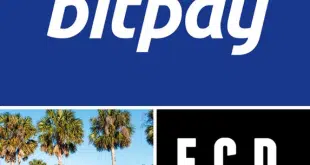Non-bank ATM operators, which run an estimated 52% of the nation’s approximately 412,000 ATMs, are struggling to maintain profitability as revenues come under pressure and costs continue to rise, according to a recent study of U.S. ATM deployers by Tremont Capital Group Inc. and the ATM Industry Association.
On the revenue side, one of the most significant findings in the survey conducted earlier this year by Tremont was that net interchange revenues have declined by more than 25% since 2011. Tremont, a consulting firm, would not disclose specific numbers publicly, but says interchange can range from 17 cents to 70 cents per cash-withdrawal transaction, depending on the network routing the transaction.
In ATM transactions, the card issuer pays interchange to the acquirer/owner. That’s opposite the way interchange flows in point-of-sale payment card transactions. According to Tremont, ATM interchange revenues are down mainly because of decreases in rates set by the two largest networks, Visa Inc. and MasterCard Inc.
Interchange is one of the major revenue streams for ATM deployers, another being surcharges. Often called convenience fees, surcharges are fees charged to a consumer to use an ATM not owned by his or her financial institution. Tremont estimates the current median surcharge for all of the nation’s ATMs is about $2, with the typical surcharge from independent ATM deployers falling somewhere between $2 and $2.50.
Surcharges have increased over time to compensate for the loss of interchange, but intense price competition and consumer resistance are putting the brakes on upward pricing. Depending on the market, surcharges have reached a ceiling of $1.50 to $3, according to the findings.
Another source of revenue for independent deployers is branding agreements with financial institutions. Under such agreements, a bank or credit union puts its brand on a non-bank ATM, which then does not surcharge that bank or credit union’s customers but the deployer receives compensatory revenues from the financial institution.
While revenues are crimped, independent ATM operators are finding that their operating expenses are difficult to reduce. These expenses cover everything from supplying cash to maintenance to processing and security. Total expense as a percentage of transaction revenues in all major industry business models has increased, according to ATMIA.
“It’s become a pretty thin-margin business,” says Sam M. Ditzion, president and chief executive at Boston-based Tremont Capital. “You need to have particularly good locations or particularly economically favorable agreements with your customers and vendors to maximize profits.” Should interchange keep falling, Ditzion predicts ATM deployers will begin removing machines from low-foot-traffic sites and other unprofitable locations.
Like card-accepting merchants, ATM deployers have a big capital expense looming with the coming of Europay-MasterCard-Visa (EMV) chip cards. They face an October 2016 liability shift in which MasterCard will place responsibility for fraudulent ATM transactions on the non-EMV-capable party. That shift will come a year after the major card networks’ corresponding liability shift takes effect for most physical retailers.
With the ATM liability shift still more than two years out, few non-bank deployers are ready to accept chip cards today. “Those numbers are very, very low,” says Ditzion, though he predicts they will begin ramping up next year. For deployers with newer machines, costs may mostly involve software upgrades, but older machines may need to be replaced, he says.
One piece of good news for independent ATM deployers is that they were largely spared the expense of installing new operating systems to replace Microsoft Corp.’s Windows XP system, which the software giant stopped supporting in April. Most bank ATMs had run Windows XP, but relatively few retail machines did, according to Ditzion. Retail ATMs tend to use Microsoft’s Windows CE or proprietary operating systems.
Tremont surveyed the owners of what it says is a large minority of the nation’s independently run ATMs to get a statistically representative sample for the study.




